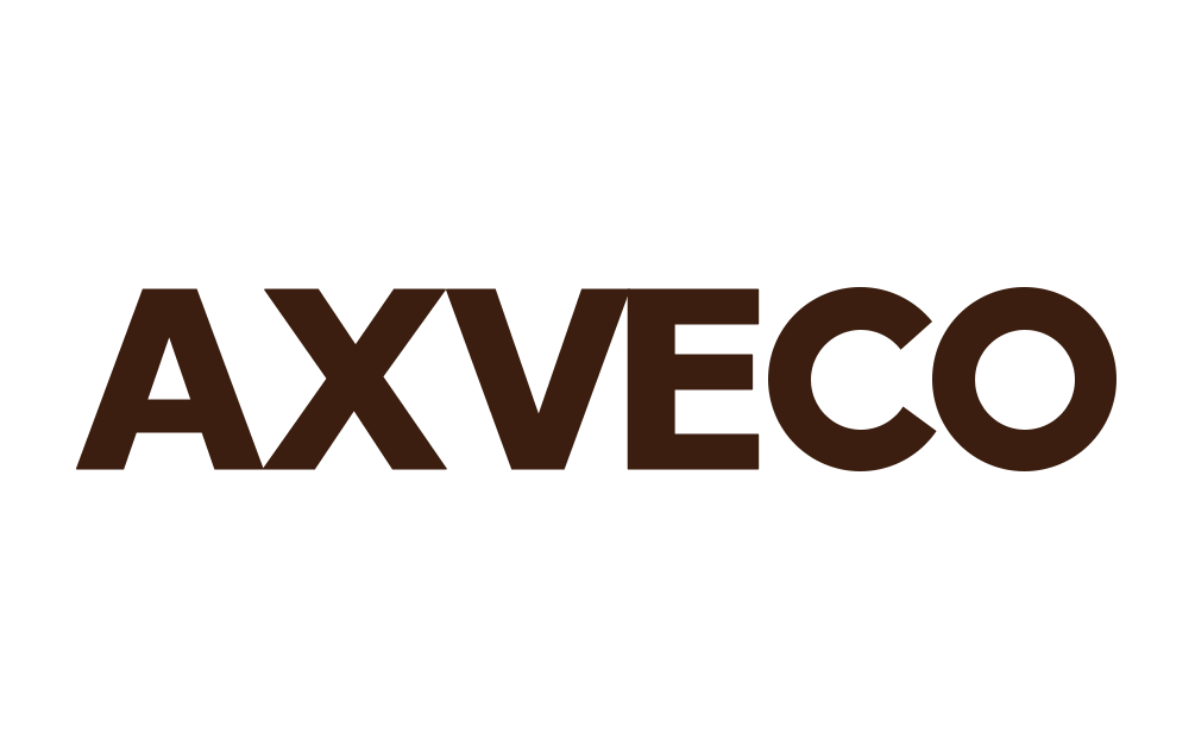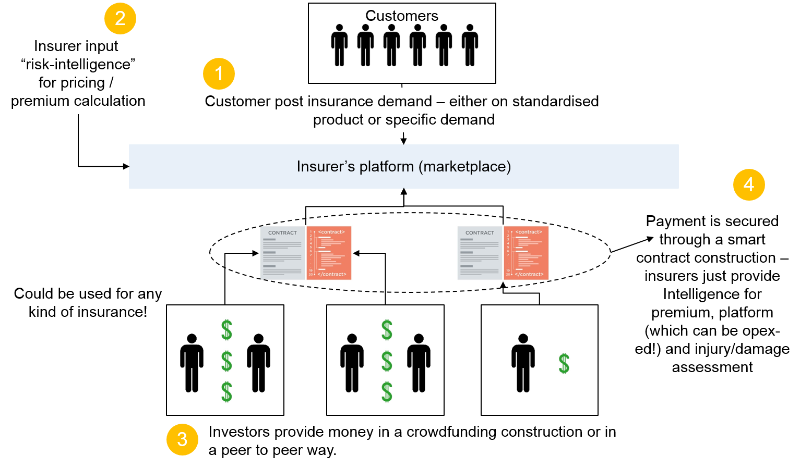A new, blockchain enabled, insurance business model
A peer2peer and/or crowdfunding, blockchain enabled insurer – can benefits outweigh the challenges?
In this opinion article I’ll discuss a possible business model for the insurance industry that could be the basis for a true peer2peer (p2p), crowdfunding model, based on blockchain technology.
There is a shift going on in the financial sector. The steep rise of the Fintech industry where investments went up eight fold in the past 5 years to almost $20 billion dollar is causing unrest within traditional companies. One of the most interesting developments in the Fintech industry is without a doubt blockchain. There are already many examples on how blockchain could impact and impacts the banking industry, especially payments services and security and commodity trading.
The impact of new technologies like Internet of Things and big data are widely described as disrupters for the insurance industry. Also crowdfunding and the possibilities for insurers is widely described. The impact of blockchain on the industry is less described, as focus at the moment is more on banking. Some papers, like the Ethereum white paper and “Chain of a lifetime” do describe examples of new products as a result of blockchain technology but focus less on new possible business models.
A report from the Dutch National Bank of March 2016 on the state of the Dutch financial markets put the signs on sustainable future business models within the insurance branch on deep red. The urgency for new business models is high, although it looks like the immediate sense of urgency is not always present within the traditional insurance companies. Focus is more on incremental change of the current model instead of disruptive change or even green field set up of a new model.
Blockchain based business model insurer
So what could be a new model and how could this model be executed. Blockchain, especially smart contracts, could be the enabler for a true p2p and/or crowdfunded insurer.
In the new business model, the focus of the insurers would focus on supply / demand matching, to risk calculation research and operations and shift away from asset management. The insurer would provide a market place like platform where customers can post their insurance demand, which could be either a standardized product or even a specific demand.
The insurer then would use their “risk-intelligence” and risk models, based a.o. on their historical data, to perform a premium calculation to post the expected return, after subtracting their margin off course. Posting this premium calculation, interested investors can bid/subscribe to the demanded insurance. This can either be done as a group in a crowdfunding way, or as an individual in a p2p way, depending on the kind of insurance request, the available resources of the investor and his or her risk appetite. So far this model looks much like Lloyd’s already has in the insurance market or as companies like Funding Circle have set up in the p2p lending market.
And here is where blockchain will play a vital role. Besides the administration being done in a decentralized ledger, with the use of smart contracts one could guarantee the payment from the investor to the customer in case the event for which the customer posted their insurance demand happens (the smart contract is thus programmed as traditional guarantee, but without the need of a bank!). By doing this in a blockchain, the administration and execution processes are simpler, almost fully automated, transparent and cheaper that in a traditional set up. Besides that, the investors know their maximum exposure (being the amount defined in the smart contract).
The insurer can also fulfill the role of assessor of the damage to verify the validity of the insurance claim, but this could as easily be outsourced to a third party and by connecting the blockchain to other ledgers, this validation can then be verified automatically.
In this model, the use of smart contracts in the insurance market would not have to be limited to the example of p2p crop-like insurances, but could virtually be used for all insurances. Especially if one will be able to pool the amounts that individual investors are willing to invest in the crowdfunding model to minimize the impact per investor in case of a major event happening.
Benefits
This new business model has benefits for all parties involved, the insurers, the investors and of course the customers.
Looking at the benefits for the insurers, in this business model, the insurer is the provider of the marketplace and the risk intelligence:
- The capital needed to insure the customers remains at the investors, so the insurer can be very capital light,
- With regards to regulatory licenses, similar models in the P2P lending business don’t need a full license or even a license at all, just an exception from the regulators,
- With regards to the development of the platform, this could (and should) be outsourced to a third party on a pay per use basis, making the company even more “capital agile”, leading to a very lean, agile and cost efficient organization!
On the investors side:
- This brings of course a new opportunity for investments in lean organizations so potential higher returns,
- Through the crowdfunding construction this opportunity is not only for large institutional investors, but also for private investors with less to spare,
- Clear insight in maximum financial risk exposure.
Benefits for customers:
- because of multiple investors bidding/subscribing and low operational costs model, the insurance can be cheaper than conventional insurances.
- This model could give the customer the possibility to post demand for very specific insurances in an easy way!
- The payment of the insurance in case of a valid event can be guaranteed due to the smart contracts.
Challenges
Of course there are various challenges in this model, some of the most urgent would be:
- First of all, will regulators accept this construction for insurers? (capital light as result of direct link between insured and investor, no more capital at the insurer).
- Can an insurer create critical mass on the investor side in order to group/spread risk in case of large payments to customers.
- Is there a platform that can support this, especially the flexibility to on the demand side to request very specific insurances.
- With regards to the risk calculation – due to the nature of very specific insurances, does an insurer have the right capability to make the risk-return calculation that is attractive to both customer and investor.
- Can such a model gain the trust of the customer as there is no middle third party with capital reserves as requested by legislation as solvency II but comes directly from the investors (even if it is guaranteed through the smart contracts).
- Will investors be interested as they might lose agility as result of guarantees through smart contracts.
Wrap up
All in all this business model could be very interesting with multiple benefits, creating a true p2p / crowdfunded insurer with the use of blockchain technology. One can even argue that, in this model, we can no longer speak of an insurer, but of an intelligent capital trading house!
Will the benefits outweigh the challenges and can this be an answer to the pressure on current insurance market business models? I would love to hear your opinion!











